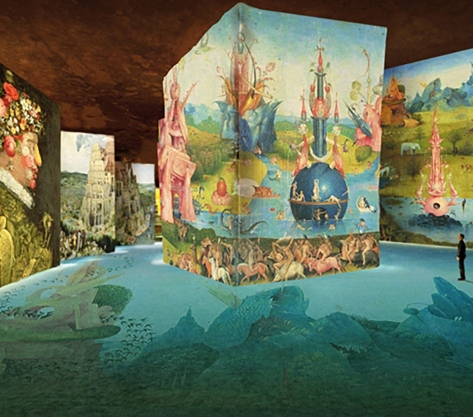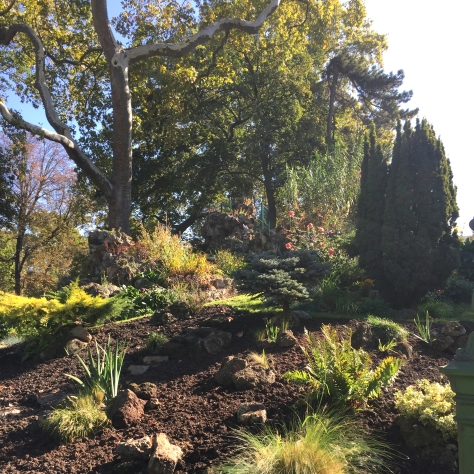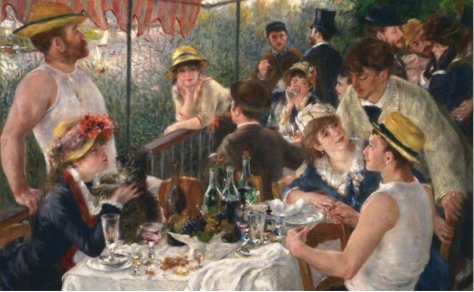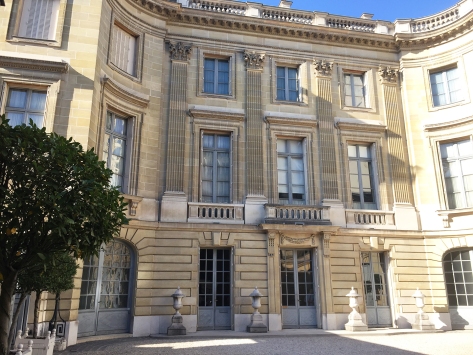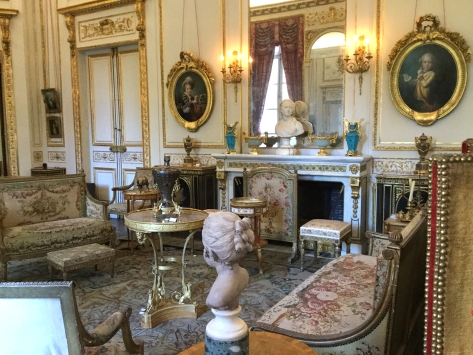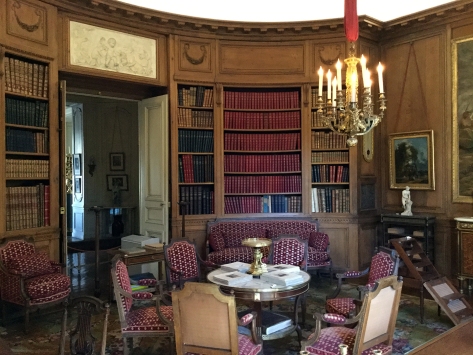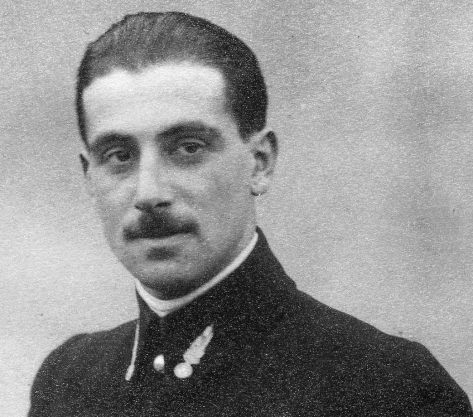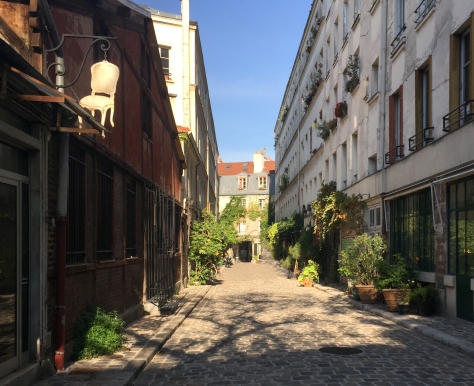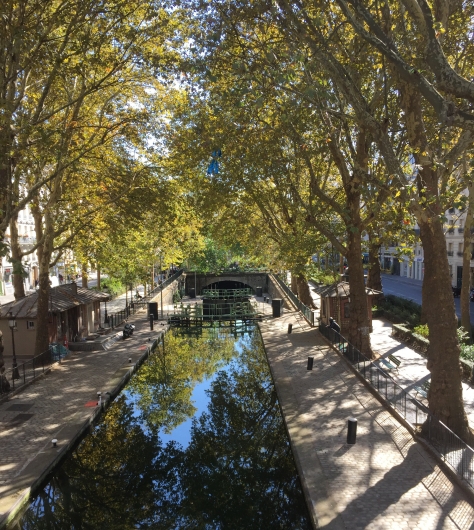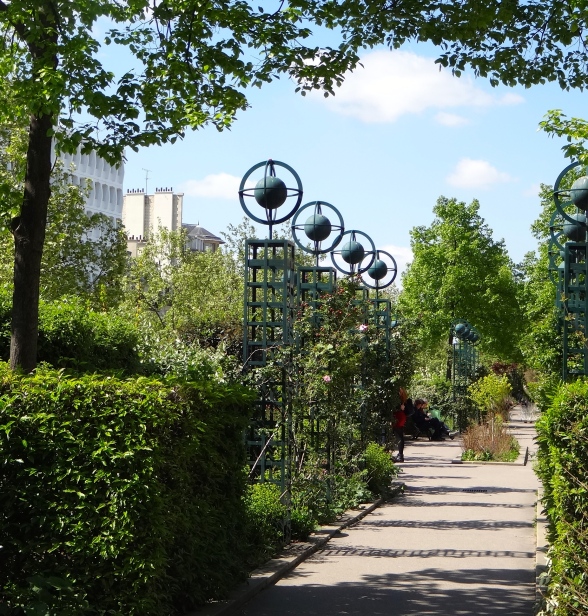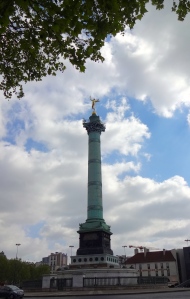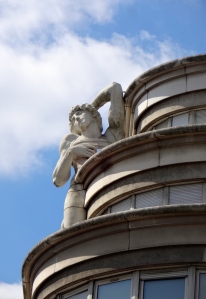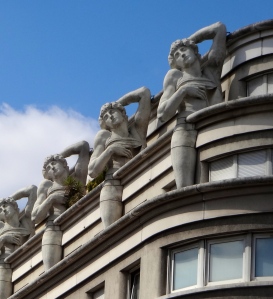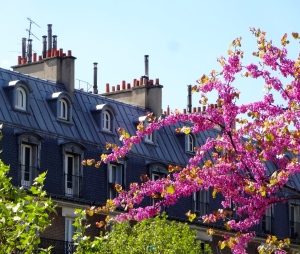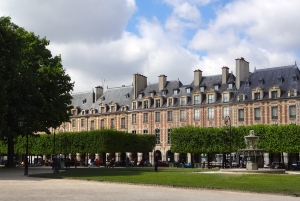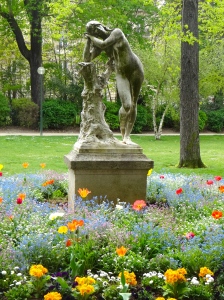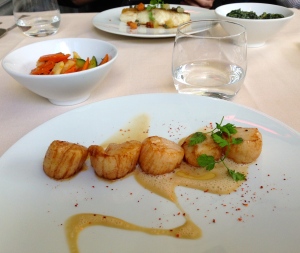Before arriving in Paris in October, I’d heard quite a bit about the newly opened digital art museum, L’Ateliers des Lumières, and so it was definitely high on my list of places to visit.
Once we arrived, my traveling companions, Thom and Eric, and I went online to check it out. We noticed right away that weekends were sold out. We also realized that it would be best to book in advance, purchasing our tickets online to avoid the potentially long lines waiting to buy tickets onsite.
Digital art has been appearing with more frequency in the past few years.
From November 2017 to April 2018, the Tate Modern presented the Modigliani exhibit. In addition to 100 of Amedeo Modigliani’s iconic portraits, nudes and sculptures, the Tate paired the exhibition with The Ochre Atelier, a Virtual Reality tour of the artist’s studio in Paris. The seated experience enabled visitors to listen to narrated accounts from the artist’s friends and Tate’s experts while exploring the more than 60 objects authentically modeled by 3D artists.
However, the digital art museum or, in the case of Paris, ‘workshop,’ which is the direct translation of atelier, is a fairly new concept.
L’Ateliers des Lumières, located in the 11th Arr., opened in April 2018 with three presentations: Gustav Klimt, Hundertwasser and the contemporary installation, Poetic_AI.
Along with our Parisian friend, Sandrine, who met us at our flat on a beautiful, warm Wednesday, we walk the short distance to the museum to arrive by our 12:30 entry time. There were two long lines, one for those with tickets and the other, much longer line, for those wishing to purchase them. Sandrine mentioned that it was good that we had our tickets as she read that the 12:30 exposition was complet (full).
We enter the building quickly and move through the ticketing area. With my phone in hand, I scan the ticket codes for each of us and we move through the turnstile.
The museum is operated by Culturespaces, a French museum foundation specializing in immersive art displays, and housed in a former foundry. The Chemin-Vert foundry dates to 1835, when it was established by the Plichon brothers to make high quality cast iron parts for the railroad and the navy. The family-owned foundry closed in 1929, and was purchased by the Martin family in 1935. The foundry was used to manufacture machine tools until the Martins’ moved their company in 2000.
In 2013, on the heels of the successful opening of the Carrières de Lumières in Les Baux de Provence, the president of Culturespaces discovered the unoccupied foundry. The Martin family was enthusiastic about the concept of creating a center for digital art in Paris, and agreed to rent the space.
As we enter the main hall of the exhibit, we find a concrete floor on which many people are sitting around its edges. We walk to the center and looking to the right, we can see around a corner, and to the left at the far end, there’s a stairway with a viewing platform partway up the wall. There’s a large round column off to one side. The ceiling appears to be about 25 feet high.
We decide this might be a good place to begin our viewing, and suddenly, the lights in the room go out. The first presentation, Poetic_AI, prepares us for what lies ahead through a series of black and white lines, drops, circles, numbers and flashing bright lights. From the floors to the ceilings, the images move and swirl, fading into and out of each other. They fall off the walls and travel across the floor. It’s stark, mystifying and mesmerizing, with the visitor as interloper in the midst of the magic. We stand enthralled, turning this way and that and even in circles to capture the essence of the event. We hold out our hands and find the images covering our skin and think, “We’ve become a part of the artwork.”
This presentation ends and the lights come up, but remain dim.
The Gustav Klimt presentation begins as we walk around to experience another view. I’ve always been rather enthralled with this Austrian artist who seemed to combine surrealism and realism with the beauty of art nouveau in his gilded portraits of women. The images flowing across the canvas of this foundry are enthralling. As the shapes draw themselves out, they appear to come alive, all while pulling you into the midst of the painting as if you belonged there. The colors are bright and bold, the golds and yellows reflecting like a sunburst.
These images are put into motion by 140 laser projectors. One would think the use of this digital medium of algorithms and mensuration would appear a bit discordant, but the beauty and awe are captivating, drawing us into the artists’ universe and immersing us in this fantastical aesthetic experience.
The final Hundertwasser presentation does not disappoint. Its beautiful bold colors and shapes draw gardens of superior beauty and gracefulness.
The experience is one where you could stand, walk or sit at various places throughout the building and see changes in the shapes and flow of the images. It’s at once, calming and emotional.
After our visit to the Ateliers des Lumières, I was sharing my experience with some friends, and one suggested I check out the new digital art museum in Tokyo by teamLab*Borderless. I checked their website and agree that it would definitely be worth the trip.
This new type of museum is inspiring and reaches an entirely new generation of artists. As it expands to other countries, it will be fascinating to see where it leads.




